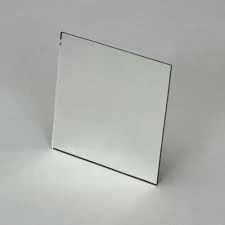

Understanding Low Emissivity Glass Features and Benefits
Low emissivity (low-e) glass is a remarkable innovation in the field of building materials, offering significant advantages when it comes to energy efficiency and thermal comfort. Typically utilized in residential and commercial applications, low-e glass is designed to minimize the amount of infrared and ultraviolet light that passes through it without compromising the amount of visible light that is transmitted. This unique characteristic makes it a popular choice in modern architecture and design.
What is Low Emissivity Glass?
Low-e glass is coated with a thin layer of metallic oxide, which reflects heat back into the building during winter while keeping the heat out during summer. The term low emissivity refers to the glass’s ability to emit thermal radiation. Conventional glass has a higher emissivity, meaning it can lose significant amounts of heat. By using low-e glass, buildings maintain a stable indoor temperature, which translates to enhanced comfort for occupants.
Types of Low-E Coatings
There are generally two types of low-e coatings hard-coat and soft-coat.
1. Hard-Coat Low-E Glass This type is produced through a process called pyrolytic coating, applied while the glass is still hot. Hard-coat low-e glass is durable and can be used in double-glazing applications. Since it has a higher solar heat gain coefficient, it is particularly effective in colder climates where retaining heat is a priority.
2. Soft-Coat Low-E Glass Made using a vacuum deposition process, soft-coat low-e glass involves applying a metallic layer when the glass is cool. This type of glass offers superior performance in terms of energy efficiency, making it ideal for warmer climates where reducing solar gain is more critical.
Energy Efficiency Benefits

One of the primary benefits of low-e glass is its ability to enhance a building's energy efficiency. By reflecting heat back into the interior during the winter months and reducing heat absorption in the summer, low-e glass significantly lowers heating and cooling costs. Research has shown that using low-e glass can reduce energy consumption by up to 30% to 50% compared to traditional windows.
Additionally, low-e glass reduces the load on HVAC systems, leading to lower emissions of greenhouse gases and a more sustainable building design. Not only does this contribute positively to the environment, but it can also enhance the marketability and resale value of properties equipped with such energy-efficient features.
UV Protection
Another notable advantage of low-e glass is its ability to block a considerable portion of harmful ultraviolet (UV) rays. UV radiation is known to cause fading and damage to interiors, including furniture, carpets, and artwork. By using low-e glass, occupants can protect their investments from sun damage, prolonging the lifespan of interior furnishings.
Aesthetic Appeal
Beyond functional benefits, low-e glass maintains a high degree of optical clarity, ensuring that natural light enhances the indoor environment without compromising views. Architechts often integrate low-e glass into their designs, using its sleek appearance to complement modern aesthetics while achieving optimal performance.
Conclusion
In summary, low emissivity glass is a highly effective solution for enhancing energy efficiency, protecting interiors from UV damage, and providing a comfortable living environment. Its dual functionality of heat retention and insulation, coupled with its aesthetic versatility, makes it a preferred choice for builders and homeowners alike. As energy conservation becomes increasingly important, low-e glass stands out as an innovative building material that meets the demands of modern construction while contributing to a more sustainable future.